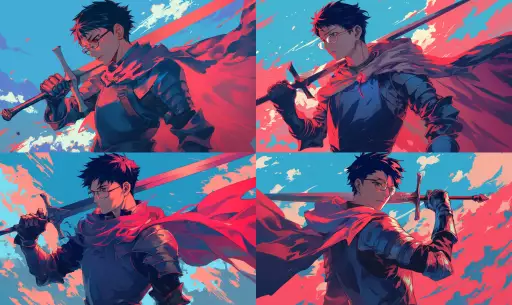Explore the Best AI Image Gallery

AI: The New Creative Muse - Reshaping the Graphic Design Landscape
The world of graphic design is on the cusp of a revolution, driven by the rapid advancements in Artificial Intelligence (AI). No longer confined to the realm of science fiction, AI tools are now empowering designers with unprecedented capabilities, automating tasks, and pushing creative boundaries. This blog post delves into this fascinating intersection of technology and art, exploring the multifaceted impact of AI on graphic design.
The Rise of AI-Powered Design Tools
A new wave of AI-powered design tools is emerging, offering a diverse range of functionalities to streamline workflows and enhance creative output. Some key applications include:
- Logo Generation: AI algorithms can analyze brand guidelines and generate multiple logo concepts within seconds, providing designers with a springboard for further refinement.
- Image Editing and Manipulation: AI-powered image editing tools can automate tasks such as background removal, object detection, and color correction, freeing up designers to focus on more strategic aspects of their work.
- Typography and Layout Assistance: AI can analyze text content and suggest appropriate font pairings, layout structures, and even generate compelling headlines, optimizing readability and visual appeal.
- Content Creation: While still in its early stages, AI is beginning to assist in generating basic design elements such as icons, patterns, and illustrations, offering designers a starting point for their creative endeavors.
The Benefits of AI in Graphic Design
The integration of AI into graphic design workflows brings numerous benefits:
- Increased Efficiency: AI automates repetitive tasks, allowing designers to focus on higher-level creative problem-solving and strategic decision-making.
- Enhanced Creativity: AI tools can generate novel ideas and concepts, sparking inspiration and pushing the boundaries of traditional design approaches.
- Cost Savings: By automating time-consuming tasks, AI can help reduce project costs and increase overall productivity.
- Accessibility: AI-powered design tools can empower individuals with limited design experience to create professional-looking visuals, democratizing access to the creative process.
Ethical Considerations in AI-Driven Design
As with any powerful technology, the use of AI in graphic design raises important ethical considerations:
- Bias and Fairness: AI algorithms are trained on vast datasets, which can inadvertently perpetuate existing biases. Its crucial to ensure that AI-powered design tools are developed and used responsibly to avoid discriminatory outcomes.
- Intellectual Property: The question of ownership and copyright arises when AI generates creative content. Clear guidelines and legal frameworks are needed to address these complexities.
- Transparency and Explainability: Its essential for designers to understand how AI algorithms arrive at their outputs. Transparency and explainability in AI decision-making are crucial for building trust and accountability.
Future Trends in AI and Graphic Design
The future of AI in graphic design is brimming with exciting possibilities:
- Personalized Design Experiences: AI will enable the creation of highly personalized designs tailored to individual user preferences and needs.
- Seamless Collaboration: AI-powered tools will facilitate seamless collaboration between designers, clients, and stakeholders, fostering a more efficient and collaborative creative process.
- Immersive Design Environments: AI will play a role in shaping immersive design experiences through augmented reality (AR) and virtual reality (VR), allowing users to interact with designs in novel ways.
Conclusion
AI is undoubtedly transforming the landscape of graphic design, offering both exciting opportunities and ethical challenges. By embracing responsible development practices and fostering a collaborative approach, we can harness the power of AI to unlock new levels of creativity, efficiency, and innovation in the world of visual communication.



